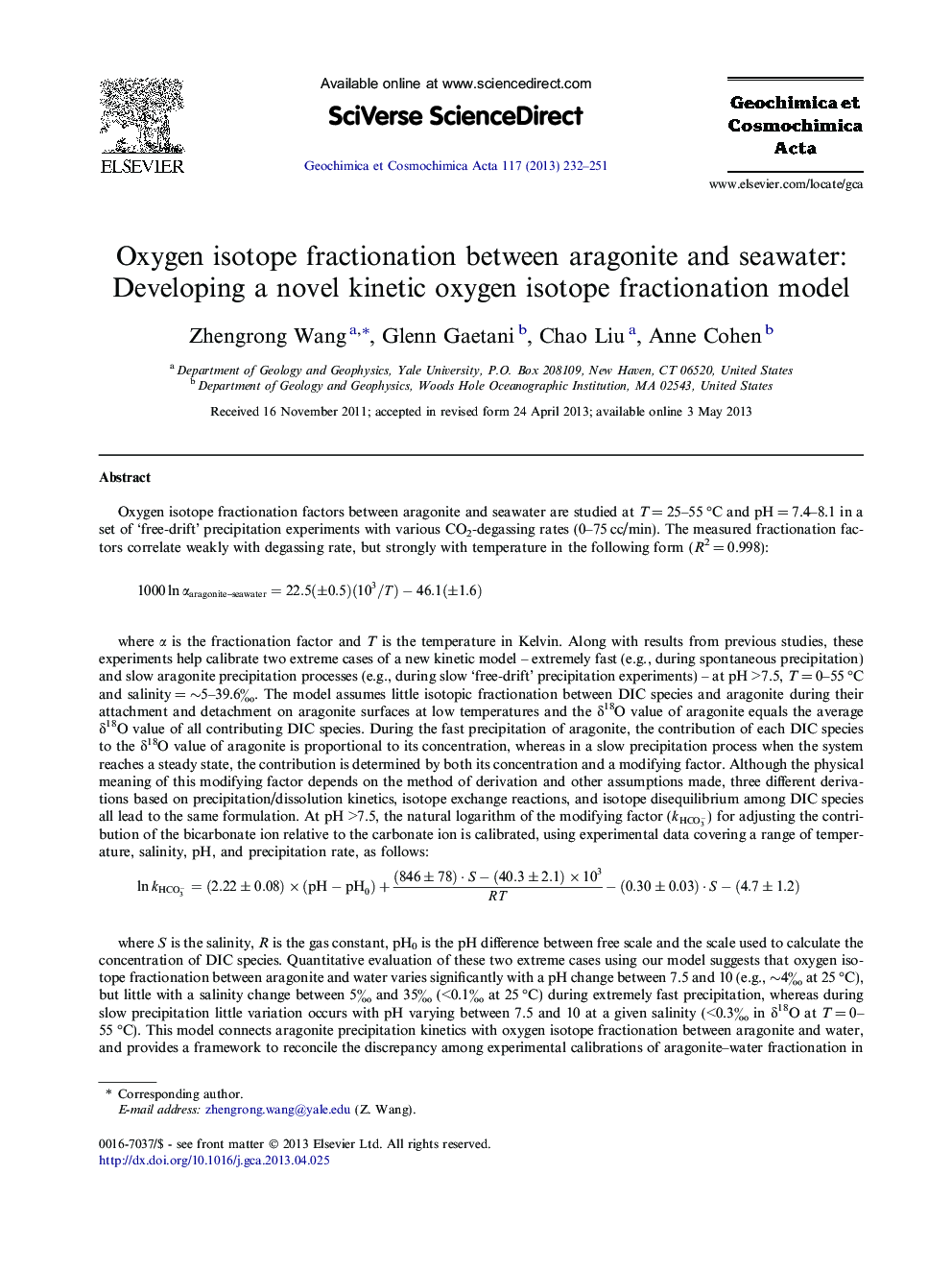| Article ID | Journal | Published Year | Pages | File Type |
|---|---|---|---|---|
| 4702371 | Geochimica et Cosmochimica Acta | 2013 | 20 Pages |
Oxygen isotope fractionation factors between aragonite and seawater are studied at T = 25–55 °C and pH = 7.4–8.1 in a set of ‘free-drift’ precipitation experiments with various CO2-degassing rates (0–75 cc/min). The measured fractionation factors correlate weakly with degassing rate, but strongly with temperature in the following form (R2 = 0.998):1000lnαaragonite–seawater=22.5(±0.5)(103/T)-46.1(±1.6)1000lnαaragonite–seawater=22.5(±0.5)(103/T)-46.1(±1.6)where α is the fractionation factor and T is the temperature in Kelvin. Along with results from previous studies, these experiments help calibrate two extreme cases of a new kinetic model – extremely fast (e.g., during spontaneous precipitation) and slow aragonite precipitation processes (e.g., during slow ‘free-drift’ precipitation experiments) – at pH >7.5, T = 0–55 °C and salinity = ∼5–39.6‰. The model assumes little isotopic fractionation between DIC species and aragonite during their attachment and detachment on aragonite surfaces at low temperatures and the δ18O value of aragonite equals the average δ18O value of all contributing DIC species. During the fast precipitation of aragonite, the contribution of each DIC species to the δ18O value of aragonite is proportional to its concentration, whereas in a slow precipitation process when the system reaches a steady state, the contribution is determined by both its concentration and a modifying factor. Although the physical meaning of this modifying factor depends on the method of derivation and other assumptions made, three different derivations based on precipitation/dissolution kinetics, isotope exchange reactions, and isotope disequilibrium among DIC species all lead to the same formulation. At pH >7.5, the natural logarithm of the modifying factor (kHCO3-) for adjusting the contribution of the bicarbonate ion relative to the carbonate ion is calibrated, using experimental data covering a range of temperature, salinity, pH, and precipitation rate, as follows:lnkHCO3-=(2.22±0.08)×(pH-pH0)+(846±78)·S-(40.3±2.1)×103RT-(0.30±0.03)·S-(4.7±1.2)where S is the salinity, R is the gas constant, pH0 is the pH difference between free scale and the scale used to calculate the concentration of DIC species. Quantitative evaluation of these two extreme cases using our model suggests that oxygen isotope fractionation between aragonite and water varies significantly with a pH change between 7.5 and 10 (e.g., ∼4‰ at 25 °C), but little with a salinity change between 5‰ and 35‰ (<0.1‰ at 25 °C) during extremely fast precipitation, whereas during slow precipitation little variation occurs with pH varying between 7.5 and 10 at a given salinity (<0.3‰ in δ18O at T = 0–55 °C). This model connects aragonite precipitation kinetics with oxygen isotope fractionation between aragonite and water, and provides a framework to reconcile the discrepancy among experimental calibrations of aragonite–water fractionation in different labs and empirical calibrations using biogenic aragonites by variations in precipitation conditions (including pH, salinity and precipitation rate).
